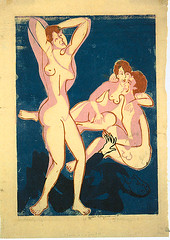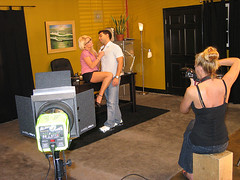I started talking with my 8-year-old son and 10-year-old daughter about sexuality as soon as they started to ask questions like, “How are babies made?” From my point of view, books have all the answers, and I turned to It’s So Amazing: A Book about Eggs, Sperm, Birth, Babies, and Families by Robie H. Harris and Michael Emberley as a starting point.
But recent news has me wondering how and when to initiate other, more difficult conversations about sexuality and power.
For example, my neighbor and I were talking over our 10-year-old daughters’ heads at the bus stop on Monday morning about Dominique Strauss-Kahn, the managing director of the International Monetary Fund who has been arrested and charged with sexually attacking a maid.
Our conversation went like this:
Neighbor: “Did you see the news about Dominique Strauss-Kahn?”
Me: “Yes, it really does show that incidents like that are about power.”
Neighbor: “That’s for sure.”
My daughter Maya hovered nearby, sensing that we were discussing something juicy, but not entirely understanding. She interrupted us with a question about school, and we changed the subject.
And then yesterday the news broke that Arnold Schwarzenegger fathered a child with one of his household employees.
I admit to turning the paper facedown on the kitchen table. I would have found a way to talk about the Schwarzenegger story, of course, but I wasn’t eager to have the conversation.
As someone who jumped in early with the “sex talk,” I wonder why I’m shying away from talking about sexuality and power. Maybe I want to protect my children from linking sexuality and violence when they still want to believe the best about people’s intentions. After reading Veronica Arreola’s great post, “Can We Whistle Stereotypes Away?” I think I might be doing a better service to my kids if I’m honest in acknowledging that some men abuse power over women.
GWP readers, what do you think? Is there a right time for the other sex talk? Do you have advice about how to navigate this topic?

 This interview originally appeared in the
This interview originally appeared in the  Hooking up is getting lots of
Hooking up is getting lots of 

